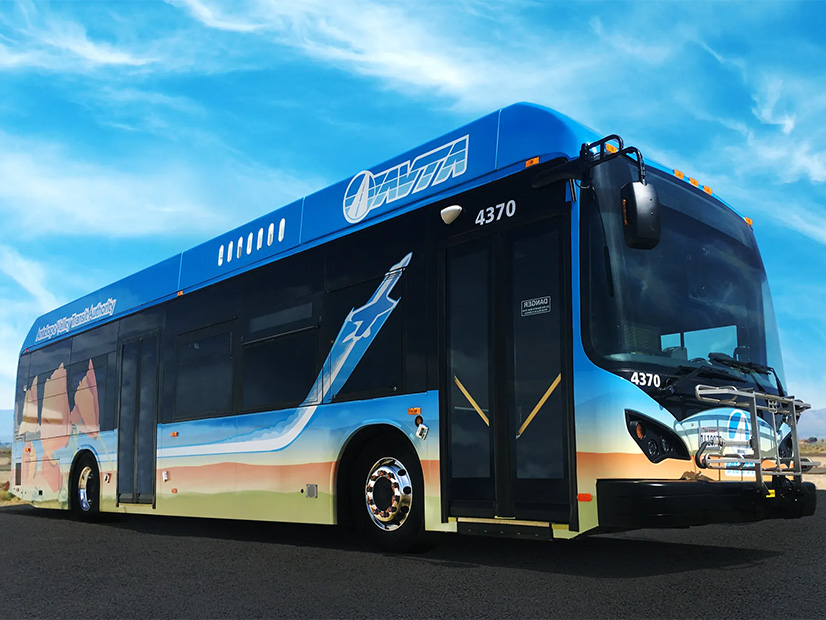
California transit agencies are enthusiastically adopting zero-emission buses, industry representatives said, but regulators are worried that ridership downturns will stall ZEB progress.
The concern is great enough that members of the California Air Resources Board (CARB) have discussed modifying a zero-emission bus regulation so that ZEB purchase requirements are tied to the availability of funding for the vehicles.
“Public transportation is in crisis,” CARB member Daniel Sperling said. “We’re asking these transit agencies not only to spend a huge amount of new money [for zero-emission buses], but also to revamp their operations.”
“We need a principle that says compliance is dependent on funding becoming available,” from federal, state or other sources, he said.
Sperling’s comments came during a CARB board meeting last month, where board members heard a report on the Innovative Clean Transit (ICT) program. CARB adopted an ICT regulation in 2018 that will phase in requirements for public transit agencies to buy zero-emission buses starting next year.
The report looked at whether transit agencies are ready for next year’s ZEB purchase requirements and concluded that they are. That’s in large part due to more than a decade of ZEB roll outs and demonstrations.
Among roughly 200 transit agencies in California, more than 50 have purchased zero-emission buses. Three agencies have fully electrified their bus fleets, including the Antelope Valley Transit Authority, which became the first all-electric transit agency in North America this year.
Out of a total of about 13,000 public transit buses statewide, transit agencies had 510 ZEBs in service and another 424 on order at the end of 2021, according to CARB. The totals include 56 fuel cell buses deployed and 62 on order.
Transit Uncertainties
But the future of public transit is uncertain. Sperling said that ridership, which had been decreasing before COVID-19, took a major hit during the pandemic and has yet to fully recover. Federal and state funds that were used to bail out transit agencies are likely to dry up, he added.
Against that backdrop, ZEB purchase requirements under the ICT regulation are set to start next year.
For large transit agencies, the rule will require 25% of new bus purchases to be zero-emission from 2023 to 2025, increasing to 50% of new bus purchases in 2026 to 2028. Requirements for smaller transit agencies start with a 25% ZEB purchase requirement in 2026 to 2028. The regulation includes credits for early ZEB purchases.
All new buses purchased by transit agencies in the state must be zero-emission in 2029 and beyond.
CARB member Davina Hurt said she’s worried about how transit agencies will meet the more stringent ZEB purchase requirements that start in 2026.
“I’m really concerned about these agencies moving into the future and meeting some of our ambitious requests,” she said. “Some of these agencies are at a financial cliff.”
Board member John Balmes said the idea of tying ZEB purchase requirements to funding availability is “a very key issue.”
“The reality of the pandemic and the decreased ridership … it’s dire,” Balmes said. “I think we need to consider a course correction.”
But “if conditions change and there’s a lot more money available for the transit agencies, I think that’s great and we can keep going full blast,” he added.
The board took no formal action on the item, which was intended as an informational report on the ICT program.
Agencies ‘Lean In’ to ZEBs
The CARB board also heard from members of the California Transit Association, a nonprofit trade organization, on their experiences with zero-emission buses.
Michael Pimentel, the association’s executive director, said the group was initially skeptical of the ICT regulation, but has decided to “lean in” to the zero-emission transition. The organization now describes itself as a leading advocate for ZEBs at the state and federal levels.
Michael Hursh, CEO and general manager of AC Transit, said his agency is running battery-electric and fuel cell buses and comparing vehicle performance. On a cost-per-mile basis, the battery electric buses are less expensive to run than diesel or hydrogen-fueled buses, he said. And the rising price of hydrogen is a concern.
But Hursh said last month’s extended heat wave and urgent demands to reduce power use raised red flags regarding battery electric buses.
“If there’s an earthquake, if there’s a massive grid-down situation, can we get the fleet out?” he said. “With hydrogen and a diesel generator, I can run my fueling station and keep my buses on the road.”
Doran Barnes, chairman of the California Transit Association’s ZEV Task Force and CEO of Foothill Transit, said there is “great enthusiasm and excitement and energy” in the transit industry for a ZEB transition.
But the industry faces challenges including the greater cost of ZEBs compared to conventional buses, in terms of vehicle cost, infrastructure and workforce expenses. In addition, ZEBs may have range limitations or not be readily available, he said.
“We’ve got to figure all of these things out, and we’ve got to do it at a rate of change and learning that’s much quicker in the next three years as we move to 2026 than we’ve seen in the past 10,” Barnes said. “That momentum’s really got to build.”
